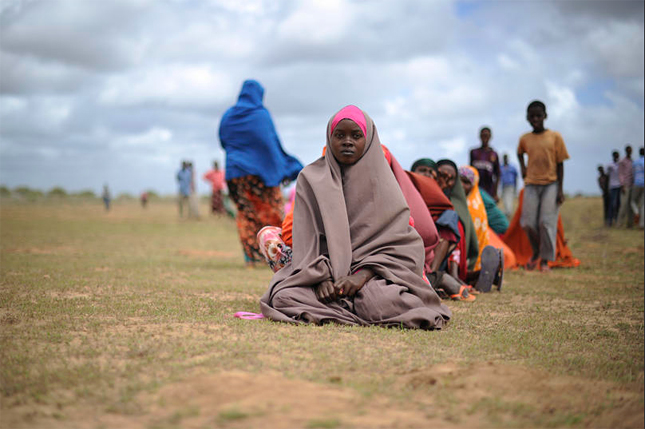-
The Outcast Majority: War, Development, and Youth in Africa (Book Preview)
January 12, 2016 By Marc Sommers
The Outcast Majority: War, Development, and Youth in Africa is born of a growing sense that the status quo won’t work, in Africa or elsewhere. Enormous youth cohorts, containing many who feel socially sidelined, call for a response that, at best, is sporadically seen.
The too-common separateness of many ordinary youth raises questions about hallowed development concepts like “community” and “civil society.” Popular macroeconomic remedies for post-war African states tend to run counter to youth ambitions, toward developing rural agriculture and the formal sector while youth increasingly rush into cities and the informal economy.
Domestic politics and other influences, moreover, frequently lead powerful donor agencies in faraway headquarters offices to develop priorities that are not the priorities of youth majorities. Often funds and activities are funneled into sectoral “stovepipes” or “silos” that determine in advance what will be done. People making policies that will affect youth may have little or no direct interaction with them. Elemental factors like class separation, gender difference, and police behavior may be sidestepped. Rationales for programs available to tiny minorities of youth populations may be questionable or unclear.
And once initiatives get to the field, a pronounced orientation toward results usually ensues. Countable indicators, outputs, and outcomes determine, to a large degree, what constitutes success. The insular process may make it difficult to figure out whether or not the initiatives left a positive, negative, or negligible impact on the people known as beneficiaries and the many more who didn’t make the cut.
Generations Apart
The presence of unprecedented numbers of young people in developing countries is not the most significant challenge to governments and international development agencies. Their alienation is.
People making policies that will affect youth may have little or no direct interaction with themExclusion is structured into education and cultural systems. Most youth in African countries are unlikely to get to secondary school or gain acceptance as adults. Wars exacerbate their sense of separation, and not just by distancing them from traditional mores, customs, and practices. Wars also accelerate change. In many ways, youth in war- and post-war Africa are learning new skills, assuming new identities, shifting to urban areas in large numbers, and shedding, when they can, traditional cultural mandates that are confining or seem passé.
Conjuring male youth as dangerous and overlooking female youth doesn’t square with realities in which young people, among many other things, resist engagement in violence, develop remarkable talents, and experience inclusion within excluded worlds. The world of war is terrible and transformative, inviting realizations and providing opportunities to rework what it means to be young in Africa today – how you become an adult and relate to the opposite sex, who you listen to, how you deal with your past, what you do, where you hope to go.
Empowering the Underestimated
The Outcast Majority aims to shed penetrating light on the lives of war-affected African youth and the workings of international development.
The effort begins with a discussion of the conditions, experiences, abilities, and forces that shape and propel the lives of African youth today, particularly those undergoing or emerging from war. They are contrasted with forces that influence and constrain today’s international development aid enterprise.
It ends by addressing the gap that lies between, proposing a framework for transforming established practice and empowering severely underestimated young people in a way that promises to make aid significantly more relevant, effective, and inclusive generally and specifically with regard to youth in war-affected Africa and elsewhere.
This book’s broad scope integrates two main sources of material. The first is interview data with youth in many war-affected African countries, African government and international agency officials, and development, youth, and evaluation experts. The second is archival research into the many subjects and concerns that make up the book’s coverage. The collective result is complementary: a series of passages featuring in-depth, firsthand analysis drawn from fieldwork in an array of countries and contexts interwoven into a narrative that covers a wide range of critical issues.
The Outcast Majority invites policymakers, practitioners, academics, students, and others to think about three commanding contemporary issues – war, development, and youth – in new ways. It encourages thoughtful reflection on what should be done for booming populations of youth, and not just those in nations affected by conflict in sub-Saharan Africa. In today’s increasingly youth-dominated world, the issues and proposed reforms detailed in the book are relevant to other places where vast and vibrant youth cohorts reside.
Based on the preface of ‘The Outcast Majority: War, Development, and Youth in Africa,’ by Marc Sommers.
Marc Sommers is a former Wilson Center fellow, award-winning author, and youth expert with research experience in over 20 war-affected countries.
Photo Credit: Women wait for food aid in Afgoye, Somalia, April 2009, courtesy of Tobin Jones/UN Photo.
Topics: Africa, conflict, demography, development, economics, featured, gender, Guest Contributor, livelihoods, population, security, youth
 A Publication of the Stimson Center.
A Publication of the Stimson Center.



